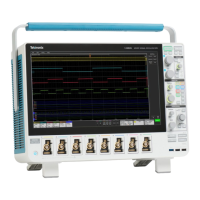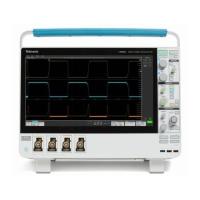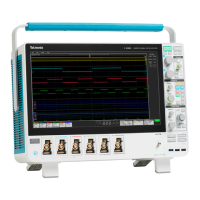Eye Width measurement algorithm
Eye Width is the minimum horizontal eye opening at the user-specified reference level. This measurement is made across the
entire record.
Height@BER
Height@BER is the Eye Height at a specified Bit Error Rate (BER). This extrapolated value predicts a vertical eye opening that
will be violated with a probability equal to the BER. It is generally not equal to the eye height actually observed in any given
acquisition. A single Height@BER value, in the given interval, is determined for each acquisition by means of Q-scale
extrapolation.
Q-factor
Quality Factor is the ratio of eye size to noise.
The final measurement value would be computed according to the equation below:
Q-factor = [mean(EyeHigh) - mean(EyeLow)] / [stddev(EyeHigh) + stddev(EyeLow)]
Where:
Eye High: the sample values of positive UI at x%.
Eye Low: the sample values of negative UI at x%.
For more details refer Eye Height
Width@BER
Width@BER is the Eye Width at a specified Bit Error Rate (BER). This extrapolated value predicts a horizontal eye opening that
will be violated with a probability equal to the BER. It is generally not equal to the eye width actually observed in any given
acquisition. A single Width@BER value is determined for each acquisition, by means of RJ-DJ separation analysis.
Power measurement algorithms
Input analysis algorithms
Measurement algorithms
460 MSO54, MSO56, MSO58, MSO58LP, MSO64 Help

